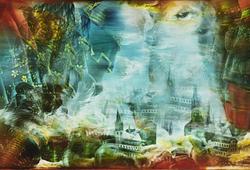Anders Zorn
The model Skald, academy janitor
Signed Zorn. Executed c. 1879 - 80. Oil on reinforced canvas 81 x 65 cm. Recorded in the Zorn Museum's archive as Manlig Modell (Male model), 1880. Skald went on to become janitor at Liljevalchs konsthall in Stockholm.
Alkuperä - Provenienssi
Neumans Konsthandel, Stockholm (according to letter to Gerda Boëthius dated 26 November 1928)
Nils Wadin, Johanneshov (according to the Zorn Museum's archive, expertised by Gerda Boëthius in 1953).
Aktiebolaget Svensk Konstförmedling, Uppsala.
Office manager Helge Möller and Mrs. Hildur Möller, Helsingborg, aquired from the above according to a receipt dated 23 March 1964.
Private Collection.
Kirjallisuus
Gerda Boëthius, "ZORN. Tecknaren. Målaren. Etsaren. Skulptören", 1949, possibly the painting mentioned p. 73 and listed in the catalog as Skalk, academy model, oil, under the year 1889 (ref. letter from Boëthius, dated 1953).
Muut tiedot
Anders Zorn arrived in Stockholm in the autumn of 1875, at the age of eighteen, with good credentials as a woodcarver and figure draftsman. He was quickly admitted to the Royal Academy of Fine Arts' preparatory school, the Principskolan. During the five years of study, he lived as a lodger, which Albert Engström later depicted with both humour and warmth: "At the beginning of his stay in Stockholm, he had lodgings with a carpenter journeyman and his nasty wife. He managed to find new accommodation with a religious porter and got to socialise with other porters. Finally, he ended up in a kind postman's family."
During his early time in the capital, Zorn attended church and wrote home to his mother that he had heard Beskow preach at Adolf Fredrik's Church. At the same time, he began to partake in the city's social life – masquerades, balls, café societies at Berns and Blanche, and ice skating in Nybroviken were part of the young artist's everyday life.
In 1878, he completed his studies at the Principskolan and was admitted to the Royal Academy's higher education department. The following year, he graduated in perspective and anatomy – two subjects that would prove crucial in his artistic development.
The Academy's teaching at this time was characterised by classical idealism, technical precision, and a strict focus on the proportions and expressions of the human body.
The model study of the academy's janitor, Skald, is a clear example of how Zorn already distinguished himself as a young student. With his swift, confident brushstrokes and a characteristically limited colour palette, he managed not only to capture the model's outer form but also to convey an inner presence, a personal expression, and the subdued drama that rests in the model's posture and gaze.
The play of light over the subject and the rendering of textures and skin would later become one of Zorn's most distinguishing characteristics – particularly in his internationally acclaimed nude studies from the 1890s. Even in the study of Skald, we can sense what would become Zorn's greatness: the ability to unite technical brilliance with a profound human expression.































































